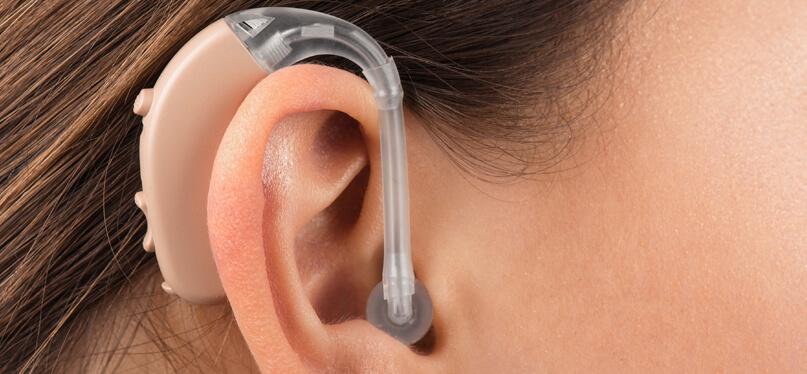
Commissions we earn from partner links on this page do not affect our opinions or evaluations.
You open a search window and find hundreds of hearing aids, all promising the same thing: clearer sound, fewer hassles, and a smoother day. The language looks identical across brands, and the spec sheets feel like copy‑paste. So let’s cut the noise.
Here’s the frame. Clarity you can hear at normal volumes beats any flashy feature. Comfort you forget about by lunchtime beats any spec bump. A stable connection for calls and video meetings beats a laundry list of rarely used modes. Return windows, warranty terms, and access to professional fine‑tuning can matter more than a tenth of a decibel in a lab graph. The models below are the ones experts keep coming back to because they hold up across commutes, offices, restaurants, and living rooms.
What “best” means here
We listen for natural speech, not just loud speech. We look for devices that keep consonants intact without turning sibilants sharp. We reward stable handling of background clatter without crushing the life out of a room. We value housings that sit securely and tips that don’t create pressure points after an afternoon of wear. We check whether the companion app makes sense on first contact, whether pairing stays put, and whether basic adjustments take seconds rather than minutes. We read the fine print on returns and service so you know your real risk if the first pick isn’t perfect.
If you want a simple rubric, use this: would you actually wear it all day, every day, for the next three years without micromanaging it? If the answer is yes, you’re in the right tier. Everything below serves that standard.
Elehear Beyond: the value benchmark others chase
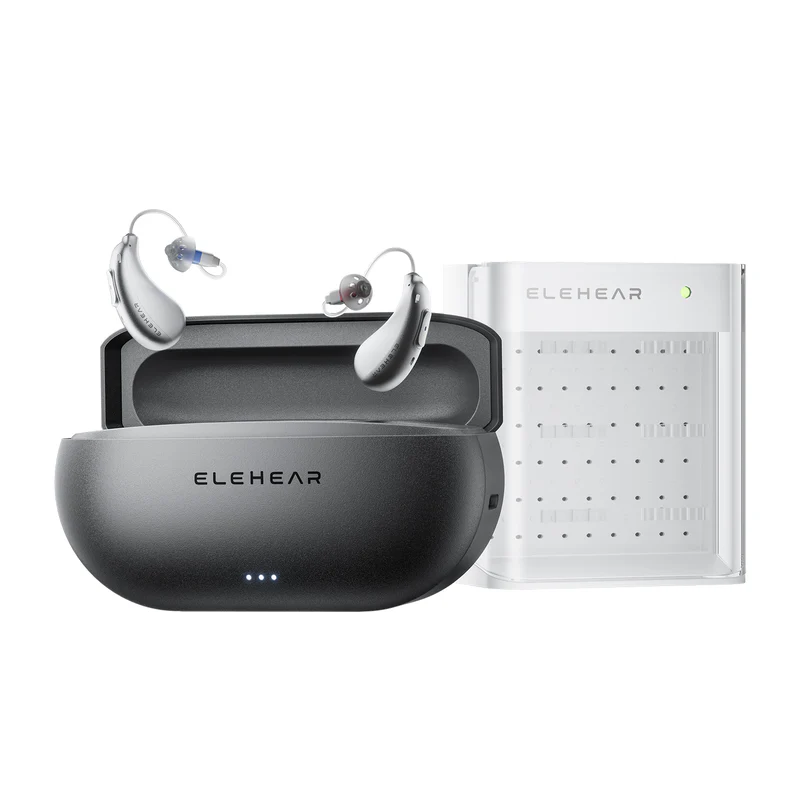
Type: Behind‑the‑ear (BTE)
Support range: mild to moderate
Connectivity: iOS and Android
Battery: up to about 20 hours
Elehear Beyond wins the value lane by refusing to act like a budget device. The on‑device controls are obvious, the companion app looks designed by someone who has actually worn a hearing aid, and the sound is clean at day‑to‑day volumes. Independent left and right volume is more than a nice‑to‑have—it’s the practical fix for uneven hearing profiles. In quiet rooms and routine conversations, voices come through with enough edge to remain distinct without turning brittle. In busy spaces, it keeps its head better than most options at this price.
Tradeoffs are familiar: limited colorways, a battery that is fine rather than endless, and music that can sound a little processed if you push volume. But the point of Elehear Beyond isn’t perfection; it’s a strong, dependable baseline that doesn’t punish your wallet. If you need modern features with minimal fuss, this is where shortlists should start.
Why choose it: the most complete sub‑$1,000 package for everyday clarity.
Why skip it: you live in loud group settings and want top‑tier composure, or you demand marathon battery life with heavy streaming.
Sennheiser All‑Day Clear: self‑fit that respects your time
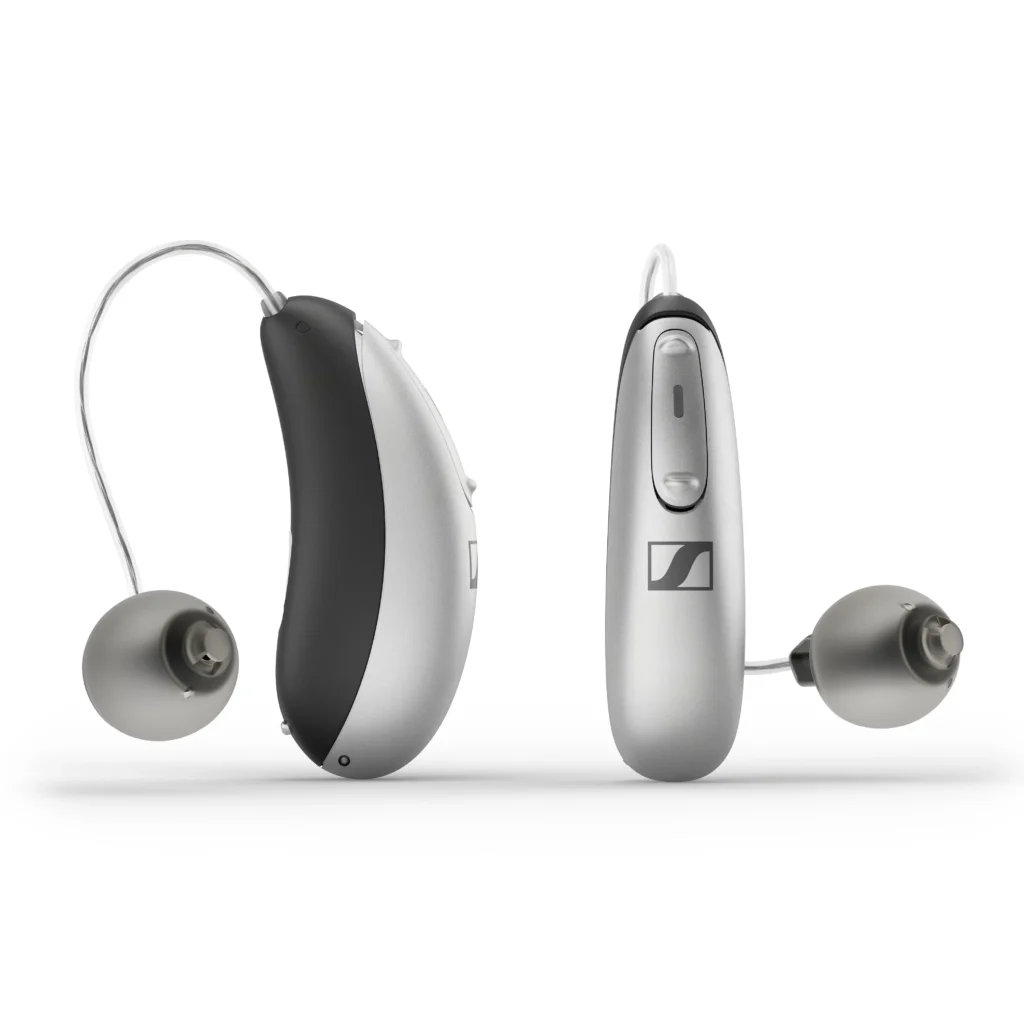
Type: receiver‑in‑canal (RIC)
Support range: mild to moderate
Connectivity: iOS and Android
Battery: comfortably through a workday
This model exists for people who would rather solve things themselves than schedule a fitting. The setup flow is plain, the app doesn’t hide essential controls, and the sound is steady. In office chatter, televised speech, or a coffee line, it stays clean without calling attention to itself. The housing is light and discreet, so you’ll forget it’s there by the second cup of coffee.
It isn’t invincible. Battery life is acceptable rather than exceptional. Some phones require a second try at pairing. But for users who want a realistic do‑it‑yourself path with professional‑grade polish, Sennheiser All‑Day Clear is an easy yes.
Choose it for: approachable setup and smooth speech.
Pass if: you need extended runtime or extensive background controls.
Sony CRE‑E10: discreet, steady, and built to last the day
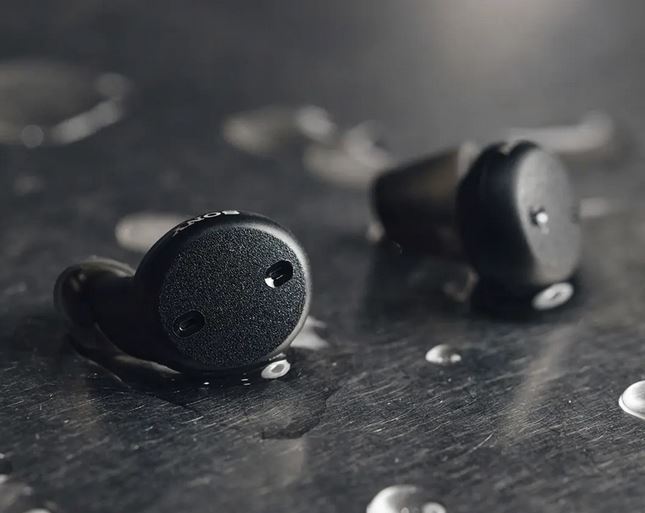
Type: in‑the‑ear (ITE)
Support range: mild to moderate
Connectivity: iOS
Battery: long single‑charge endurance
The CRE‑E10 is for readers who want a small, neat in‑ear form that doesn’t need babysitting. It inserts cleanly, stays put during errands and walks, and holds a charge. The app gives you enough tonal control to nudge voices forward without turning a simple adjustment into a weekend project. Outdoor rustle is handled better than most ITEs, which matters if you spend time outside.
Limitations are clear: iOS is the native home, and a few listeners notice a chorus‑like artifact with certain music at high volumes. If cross‑platform control is a must, look elsewhere. If you want an in‑ear that simply does its job, this is the discreet pick that earns its place.
Choose it for: small footprint, long battery, reliable everyday sound.
Pass if: you use Android or chase audiophile music performance from a hearing aid.
Zepp Clarity Pixie: the comfort specialist
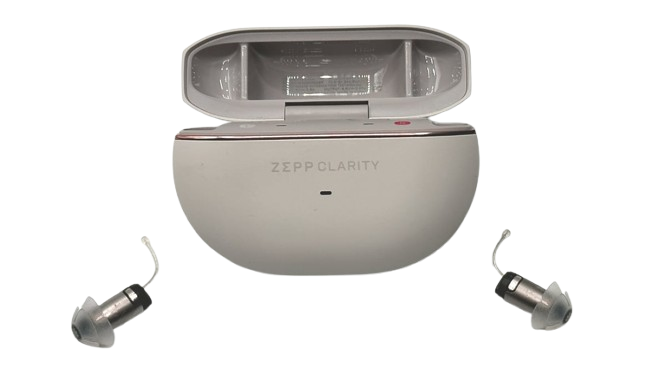
Type: in‑the‑ear (ITE)
Support range: mild to moderate
Connectivity: iOS and Android
Battery: up to roughly 17 hours
Some devices win on features; Pixie wins on wearability. Testers called out the shape, insertion, and forget‑it’s‑there feel. If your top priority is a shell that disappears once seated, this design is the one most likely to make you a full‑day wearer. The look is low‑profile and the basic speech balance is fine for routine days.
Tradeoffs matter here: customization range is thinner than rivals, and the app can feel stubborn. In environments that push lesser devices into feedback or distortion, Pixie can run out of room sooner. Treat it as a comfort‑first option for moderate listening needs rather than a brawler for loud nights out.
Choose it for: all‑day comfort and a discreet profile.
Pass if: you need robust handling of complex background noise.
Phonak Audéo Sphere Infinio: premium clarity that earns the price
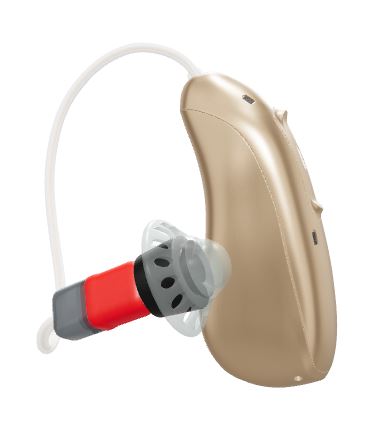
Type: RIC/BTE
Support range: mild to profound
Connectivity: broad smartphone support
Battery: day‑long without drama
When people ask why anyone pays premium prices for a prescription device, this is the answer. The Infinio tier keeps conversation centered even when rooms get busy. Directional pickup is measured rather than aggressive, so voices come forward without making spaces feel flat. The brand’s accessory ecosystem—remote microphones, TV connectors, and the like—turns a strong core into a system that scales with your life.
It is expensive, and you will want a professional fitting to unlock its best behavior. But once dialed in, it becomes the kind of equipment you stop thinking about. That’s the whole point.
Choose it for: consistent clarity in tough rooms and a mature support ecosystem.
Pass if: your days are quiet and your budget isn’t flexible.
Lucid Engage: the budget pick that respects speech
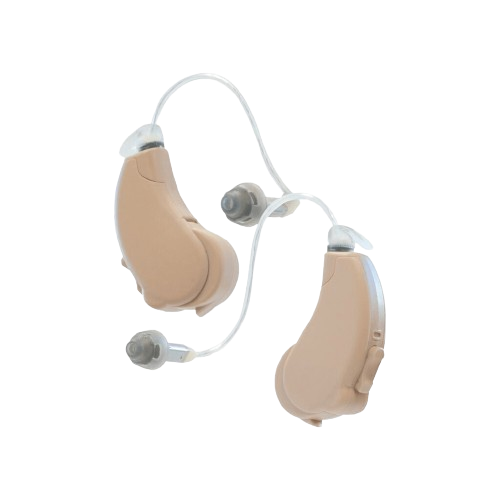
Type: receiver‑in‑canal (RIC)
Support range: mild to moderate
Connectivity: iOS and Android
Battery: up to about 16 hours
Engage proves that a lower price doesn’t have to mean a noisy day. Voices land with a natural tone, podcasts sound like people rather than radio static, and the app pairs without theatrics. The speaker‑in‑ear design helps keep dialogue intelligible, and the moisture‑resistant build handles everyday wear.
Downsides are predictable: shorter battery span, lighter customization, and a tendency to feel outgunned by truly loud settings. Tip comfort is personal; plan to try a couple sizes. For the money, though, it’s a smart entry point.
Choose it for: affordable clarity and easy streaming.
Pass if: you need deeper controls or longer battery life.
Lexie B2 Plus: the easy all‑rounder
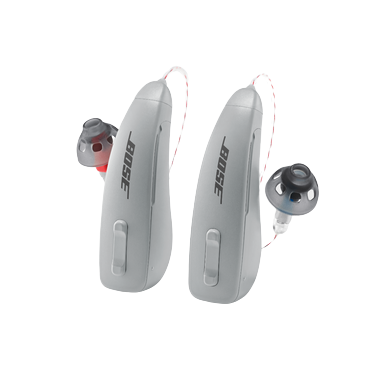
Type: receiver‑in‑canal (RIC)
Support range: mild to moderate
Connectivity: iOS and Android
Battery: around 18 hours
If you want a device that sounds natural out of the box and stays comfortable, B2 Plus keeps landing on shortlists. It isn’t the flashiest option, but day after day, listeners describe it as the one they’d keep wearing. The app is understandable without a manual, and small adjustments translate clearly to what you hear.
You’ll give up color variety and some glamour features. Music streaming is fine rather than stunning. But for a balanced daily driver, this is the calm choice that holds up over months, not just a week.
Choose it for: comfort, clean speech, and sensible controls.
Pass if: you want a luxury build or specialized features you’ll rarely use.
Jabra Enhance Select 500: service you can feel, stamina you can trust
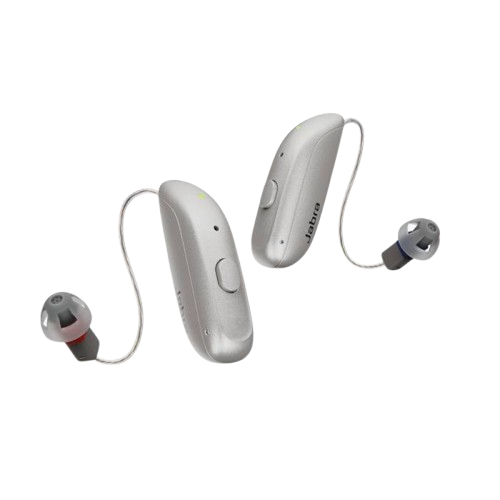
Type: receiver‑in‑canal (RIC)
Support range: mild to moderate
Connectivity: iOS and Android
Battery: up to a full day
What separates this tier is not only what’s in the ear but what surrounds it. The Select 500 includes extended remote adjustments by professionals. That matters when you’re two weeks in and want a gentle tweak without taking half a day off. The device itself handles groups with poise and keeps voices intelligible without turning edgy. Battery stamina is strong.
Setup can be finicky on some phones, and if you never use remote care, you’ll miss a key part of the value. For everyone else, this is one of the least frustrating ways to get from “decent” to “dialed.”
Choose it for: ongoing support and reliable performance in lively spaces.
Pass if: you want the lightest possible chassis and manage everything solo.
Jabra Enhance Select 300: the simpler sibling that still sounds right
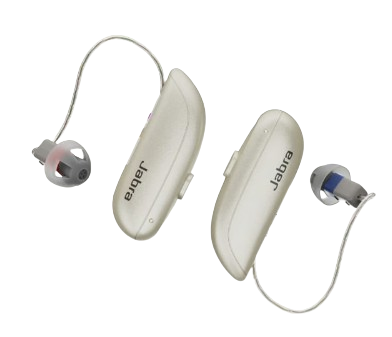
Type: receiver‑in‑canal (RIC)
Support range: mild to moderate
Connectivity: iOS and Android
Battery: similar endurance to 500
The 300 trims features but preserves the sound character that makes Jabra attractive. Once you’re past the first‑week learning curve, the app is straightforward. Voices remain clear through the workday, and fatigue stays low. If you like Jabra’s approach but want a friendlier price, this is the art of enough.
Choose it for: comfort and clarity without the premium bundle.
Pass if: you spend your nights in loud venues and need the 500’s stronger support model.
Oticon Intent: finesse over flash
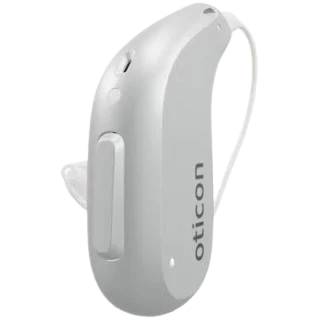
Type: receiver‑in‑canal (RIC)
Support range: mild to severe
Connectivity: iOS and Android
Battery: up to roughly 20 hours
Oticon’s flagship wins not by shouting but by staying graceful. Speech keeps its natural timbre, spatial cues survive, and feedback control behaves. If you’re sensitive to harshness or the “loud but muddy” problem, this tuning philosophy pays dividends. The build quality is excellent and the app does its job without a maze of screens.
You pay for the privilege, and you’ll want a professional fitting with real‑ear checks to lock in targets. If you’re prepared for that, it’s one of the few devices that feels truly refined.
Choose it for: natural sound and premium fit‑and‑finish.
Pass if: budget rules the decision and your sound environments are simple.
How to choose without second‑guessing yourself
Start with your routine, not a spec list. Do you spend hours in meetings or on video calls? Prioritize models with stable connections and easy on‑device volume. Are you in restaurants and open offices most days? Look for devices that keep voices distinct without flattening the room. Work in quiet spaces and just need dialogue to stop slipping away? A mid‑tier model is usually more than enough.
Run a three‑week onboarding plan. Week one: home and errands. Week two: restaurants, grocery aisles, transit. Week three: fine‑tune based on notes. If you feel overwhelmed, drop volume one notch; don’t take the device out. Schedule a single follow‑up adjustment rather than constant tinkering.
Choose a return policy you can live with. Thirty to sixty days is common—get it in writing, including any restocking language. Keep boxes and accessories untouched until you’re sure. Focus your testing on the places you actually live and work, not a sound booth you’ll never see again.
Fit and comfort matter more than any feature
If your own voice sounds boomy, that’s a vent or fit issue. Try a different dome or a small reduction in low‑frequency gain. If you hear whistling when you hug someone or press a phone to your ear, the seal is inconsistent—larger dome or custom mold time. If one ear gets tired by lunch, the tip is wrong or insertion depth is off. Thirty minutes of careful fit work is worth more than an extra page of features.
Connectivity basics that prevent headaches
Pair in a quiet space. Restart the phone. Turn Bluetooth off and on. Pair one side at a time if the brand expects that. Update firmware only while the devices are charging and your phone battery is healthy. If you bounce between phone and laptop, set a priority so the hearing aids don’t cling to the wrong device in the middle of a call. Reliability beats clever tricks.
For music lovers: these devices are built for speech first. If you want concert‑grade playback, use dedicated earbuds for that task and let hearing aids excel at what they’re designed to do—carry voices cleanly through a full day.
Maintenance that keeps sound consistent
Nightly: wipe the housings, brush the microphones, and seat everything in a dry charger if you have one. Weekly: replace wax guards if needed and check domes for tears. Monthly: review fit and confirm the seal is still right. If you live in humidity or work out often, keep a dehumidifier jar or silica pack in rotation. Small habits prevent big problems.
Ownership math that reflects reality
Add the device price to two or three minor service touchpoints in the first year, a pack of domes, wax guards, and one charger cable replacement. If a premium package includes remote adjustments that save you multiple trips, treat that as real value. The cheapest invoice can become the most expensive choice if it forces constant fiddling or early replacement. Buy once; buy correctly; stop thinking about hardware.
Comparison table
| Model | Style | Support Range | Battery (approx.) | App Ease | Best For |
|---|---|---|---|---|---|
| Elehear Beyond | BTE | Mild–Moderate | Up to 20 hrs | High for price | Value seekers |
| Sennheiser All‑Day Clear | RIC | Mild–Moderate | Workday | Good | Self‑fit simplicity |
| Sony CRE‑E10 | ITE | Mild–Moderate | Long | Good on iOS | Discreet, long days |
| Zepp Clarity Pixie | ITE | Mild–Moderate | ~17 hrs | Fair | Comfort above all |
| Phonak Audéo Sphere Infinio | RIC/BTE | Mild–Profound | Full day | Strong | Premium clarity + ecosystem |
| Lucid Engage | RIC | Mild–Moderate | ~16 hrs | Good | Budget with streaming |
| Lexie B2 Plus | RIC | Mild–Moderate | ~18 hrs | Good | Easy all‑rounder |
| Jabra Enhance Select 500 | RIC | Mild–Moderate | Full day | Strong | Remote care + stamina |
| Jabra Enhance Select 300 | RIC | Mild–Moderate | Full day | Good | Comfortable, lower tier |
| Oticon Intent | RIC | Mild–Severe | ~20 hrs | Strong | Acoustic finesse |
The bottom line
All ten devices deserve their place. The trick is aligning the right strengths with your ordinary day. If you want modern features without a premium invoice, Elehear Beyond and Lexie B2 Plus are the most rational starts. If you live in complex sound and want equipment that keeps its balance, Phonak Audéo Sphere Infinio and Oticon Intent justify the spend. If you want service that follows you home, Jabra Enhance Select 500 is built for that. prefer a small, neat in‑ear? Sony CRE‑E10. need a comfort‑only champion? Zepp Clarity Pixie. watching your budget but still want credible speech? Lucid Engage. prefer self‑fit and a tidy app? Sennheiser All‑Day Clear.
Pick three, trial them in the places you actually live, and keep only the one that disappears into your routine. That—not a spec sheet—is how you choose the best hearing aid.
Information provided on this site is for educational purposes only. Your health and wellness is unique to you, and the products and services we review may not be right for your circumstances. We do not offer individual medical advice, diagnosis or treatment plans. For personal advice, please consult with a medical professional. AdChoices